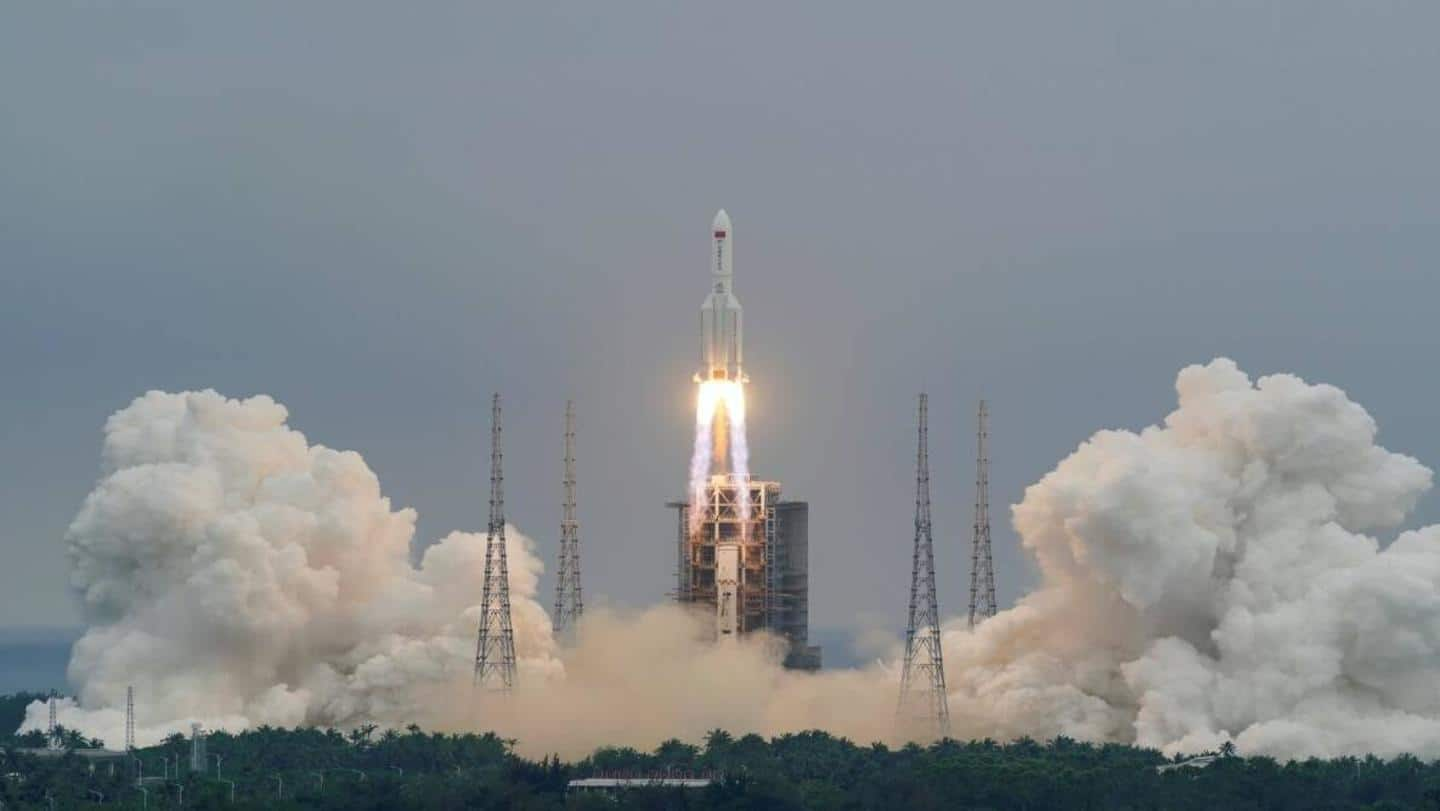
Space debris from China's biggest rocket lands in Indian Ocean
What's the story
Remnants of China's biggest rocket disintegrated over the Indian Ocean on Sunday, the China Central Television (CCTV) reported, citing the China Manned Space Engineering Office.
Ending days of frenzied speculation over where the debris would land, parts of the Long March 5B re-entered the atmosphere at 10:24 am (Beijing time), Reuters reported.
Most of the debris was burnt up in the atmosphere, said CCTV.
Location
Impact location in Indian Ocean, west of the Maldives archipelago
The debris landed at a location with the coordinates of longitude 72.47 degrees east and latitude 2.65 degrees north, putting the impact location in the Indian Ocean. The remnants now lie west of the Maldives archipelago.
The US Space Command had earlier confirmed the rocket's re-entry over the Arabian Peninsula but said it was unknown if the debris impacted land or water.
Information
US earlier refused to shoot down rocket's remnants
On Thursday, US Defense Secretary Lloyd Austin had said the military had no plan to shoot down the remnants of the Chinese rocket. "We're hopeful that it will land in a place where it won't harm anyone," Austin told reporters, according to The Guardian.
Deployment
Long March was second 5B variant; maiden flight in 2020
Launched from Hainan island on April 29, the Long March was the second deployment of the 5B variant after its maiden flight in May 2020.
With most of Earth's surface covered by water, experts said the chances of populous areas being hit were low.
Pieces from the first Long March 5B fell on Ivory Coast and damaged several buildings, though no injuries were reported.
Space ambitions
Rocket had taken off with module for permanent space station
The Long March 5B, comprising one core stage and four boosters, had taken off with the unmanned Tianhe module, which contains what will become living quarters on a permanent Chinese space station, reported Reuters.
The rocket is set to be followed by 10 more missions to complete the station.
These rockets are deemed integral to China's near-term space ambitions, including exploratory probes to Mars.
NASA
China failing to meet responsible standards: NASA
In a statement after the re-entry, NASA Administrator and former senator Bill Nelson said China must ensure the stability, security, and long-term sustainability of space operations.
"Spacefaring nations must minimize the risks to people and property on Earth on re-entries of space objects and maximize transparency regarding those operations," he said.
It is "clear that China is failing to meet responsible standards," he added.
Criticism
Lack of clarity makes Chinese designers look lazy: Harvard-based astrophysicist
A member of the Harvard-Smithsonian Center for Astrophysics, Jonathan McDowell, told Reuters that the potential debris zone could've been as far north as New York, Madrid, or Beijing, and as far south as southern Chile or Wellington.
"It makes the Chinese rocket designers look lazy that they didn't address this," he said, referring to the uneasiness owing to the lack of China's concrete reassurances.
China
Low probability of causing harm: Chinese Foreign Ministry
Amid concerns from international organizations over the "out of control" entry, Chinese Foreign Ministry spokesperson Wang Wenbin on Friday had reiterated that the probability of the rocket causing harm was "extremely low," China's Global Times reported.
"It's an old trick used by hostile powers every time they see technological breakthroughs in China, as they are nervous," aerospace expert Song Zhongping was quoted as saying.
Experts' opinion
Returning parts of all spacecraft cannot be controlled: Chinese experts
According to Global Times, space experts said that the concept of wreckage is invented as returning parts of all spacecraft are powerless and cannot be controlled.
"It is common practice across the world for upper stages of rockets to burn up while re-entering the atmosphere," Wenbin had told reporters.
The environmentally friendly fuel the rocket uses would not cause pollution, insiders told Global Times.